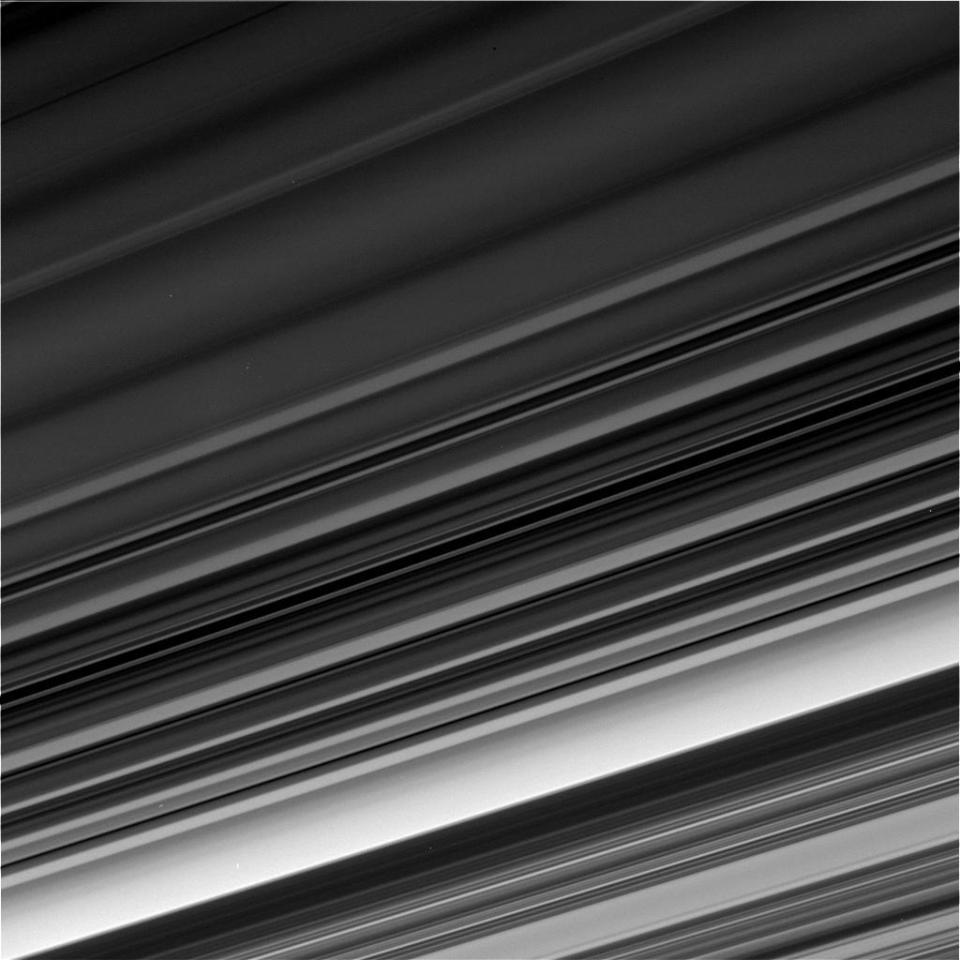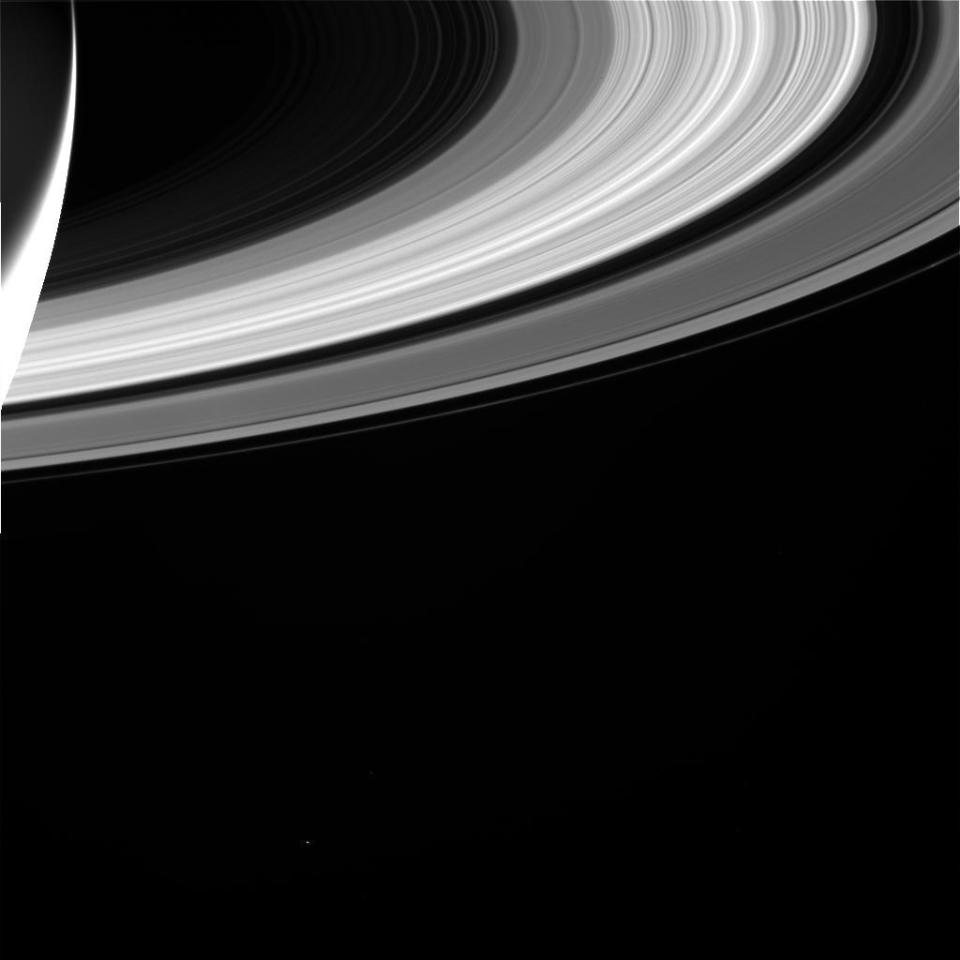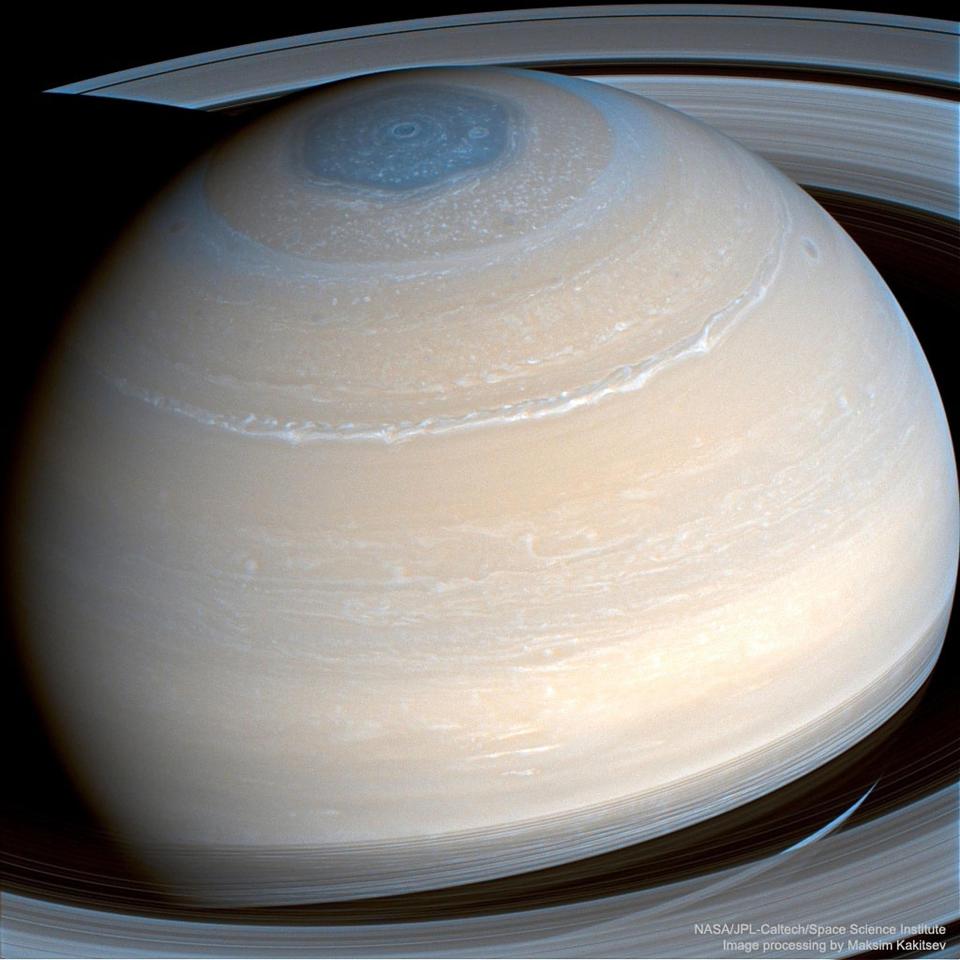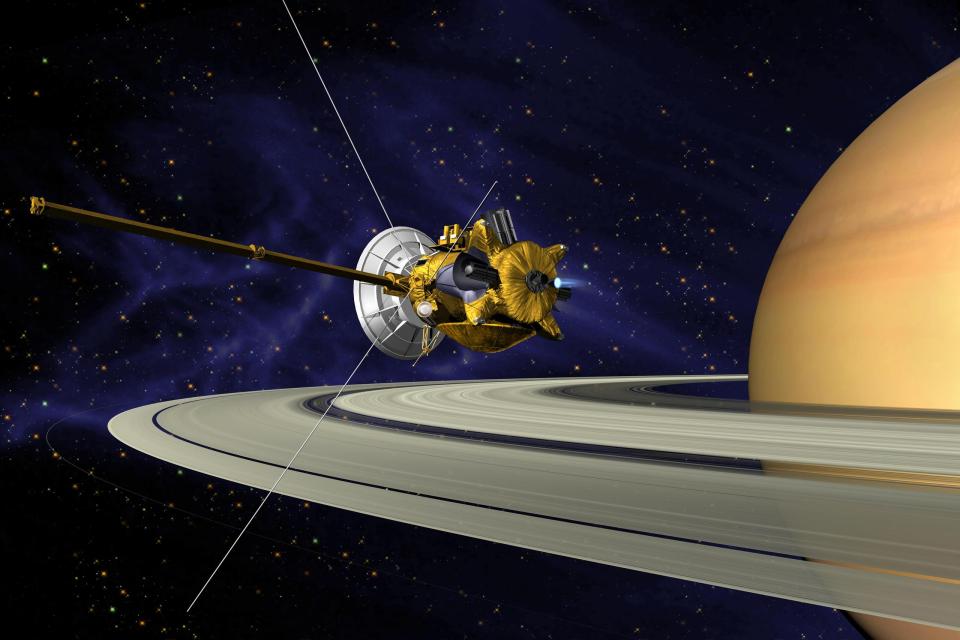Nasa Cassini probe snaps last incredible pictures of Saturn before today’s ‘Grand Finale’ death dive into the planet
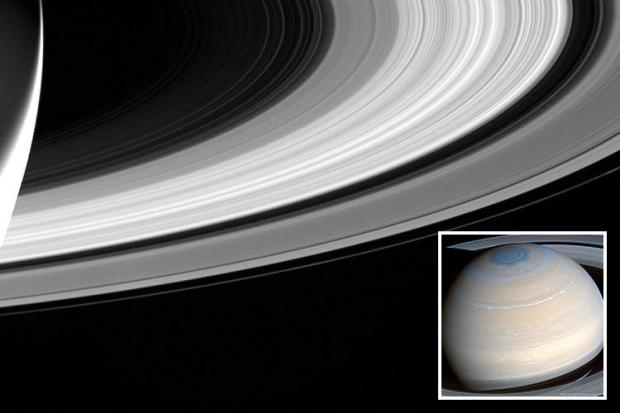
NASA has published the Cassini probe's final images of Saturn ahead of its "Grand Finale" this afternoon, which will see the spaceship perform a death dive into the planet's atmosphere.
At about 1.30pm British time, Cassini will zoom into Saturn's atmosphere and explode in a ball of flames.
Flight controllers at California's Jet Propulsion Laboratory expect one last burst of scientific data from Cassini before the radio waves go flat and the spacecraft falls silent.
Nasa's Earl Maize said he felt great pride and couldn't have asked for more from "such an incredible machine".
Cassini is the only spacecraft to ever orbit Saturn and sent back stunning close-up images of the planet, its rings and moons in all their glory.
It also peered at the mysterious moons of Enceladus and Titan, which are thought to hide oceans that could contain alien lifeforms.
"We've left the world informed but still wondering," Maize said earlier this week. "We've got to go back. We know it."
Cassini took one last batch of pictures before its final job: sampling the atmosphere of the gas giant and sending the data back to Earth.
The spacecraft was expected to tumble out of control while plummeting at 76,000mph through the gas giant planet's atmosphere.
Astronomers will use ground telescopes to look for the flash of light when Cassini finally explodes, but this dramatic moment is unlikely to be spotted from a billion miles away.
Final confirmation that Cassini had burned up is expected just before 2pm British time.
It takes 83 minutes for a signal from the spacecraft to reach Earth, so we'll receive final pics and data later in the afternoon.
This Grand Finale, as NASA calls it, was dreamed up when Cassini's fuel tank started t get close to running empty after 13 years exploring the planet.
Scientists wanted to prevent Cassini from crashing into Enceladus or Titan and contaminating those pristine worlds.
And so in April, Cassini was directed into the previously unexplored gap between Saturn's cloud tops and the rings.
Twenty-two times, Cassini entered the gap and came out again. The last time was last week.
Maize said all the staff would be on hand "as our faithful traveller from Earth makes its final goodbye."
MYSTERY OF SATURN'S RING These chilling ‘whistling’ sounds beamed back from Saturn’s rings left Nasa experts baffled
The leader of Cassini's imaging team, Carolyn Porco, a visiting scholar at the University of California, Berkeley, was so involved with the mission for so long that now, "I consider it the start of life, part two."
Cassini was launched in 1997 and took seven years to travel two billion miles to Saturn, before embarking on a 13-year journey of discovery that delivered a wealth of scientific data on the planet and its moons.
It was an international endeavour, with 27 nations taking part. The final price tag was $3.9 billion (£2.9 billion).
Visit The Sun Online this afternoon for all the news about Cassini's Grand Finale.
MORE STORIES ABOUT SATURN



